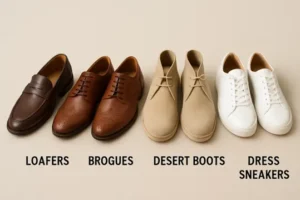Cultural preservation stands out as one of humanity’s most pressing responsibilities, particularly when it comes to protecting the rich artistic traditions that define Indigenous communities across Canada. The survival of these time-honoured practices depends largely on our collective commitment to supporting the artists who carry forward ancestral knowledge through their work.
Canadian Indigenous art and crafts represent far more than just decorative objects or tourist souvenirs—they embody centuries of cultural wisdom, spiritual beliefs, and technical mastery passed down through generations. Each piece tells a story, whether it’s the intricate beadwork on traditional moccasins or the careful weaving of porcupine quill baskets that reflect deep connections to the natural world.
The Foundation of Cultural Continuity
Traditional Knowledge Systems: Preserving Ancient Wisdom Through Modern Practice: Indigenous art forms serve as vessels for transmitting cultural knowledge that might otherwise disappear. When artisans create pottery using techniques their grandmothers taught them, they’re not simply making functional objects—they’re maintaining a direct link to ancestral practices. This knowledge transfer happens through hands-on learning, where young people absorb not just the technical skills but also the cultural significance behind each design element and material choice.
Spiritual Connections: Art as Sacred Expression: Many Indigenous art forms carry profound spiritual meaning that extends beyond their physical appearance. The patterns in beadwork might represent family lineage, while the colours chosen for leather work could reflect seasonal ceremonies or personal spiritual journeys. When we support these artists, we’re helping preserve not just aesthetic traditions but entire worldviews that see art as inseparable from spiritual practice and community identity.
Economic Empowerment Through Ethical Purchasing
Direct Artist Support: Creating Sustainable Livelihoods: Purchasing directly from Indigenous artists or established Indigenous-owned businesses creates a foundation for economic stability within communities. This approach ensures that profits flow back to the creators themselves rather than being filtered through multiple intermediaries who may have little connection to the cultural significance of the work. The economic impact extends beyond individual artists to support entire family networks and community structures.
Community Development: Strengthening Cultural Infrastructure: When Indigenous artists achieve financial success through their work, they often reinvest in their communities by teaching younger generations, purchasing higher-quality materials, and participating in cultural events that strengthen community bonds. This creates a positive cycle where economic success enables greater cultural preservation, which in turn attracts more support from ethical consumers who value authenticity.
Market Recognition: Elevating Indigenous Voices: Ethical purchasing practices help establish Indigenous artists as respected professionals in the broader art market rather than relegating them to niche categories. This recognition opens doors to gallery exhibitions, collaborations with designers, and educational partnerships that further amplify Indigenous voices while providing additional income streams for artists.
Understanding Authenticity and Avoiding Appropriation
Recognising Genuine Craftsmanship: Quality Indicators to Consider:
- Handmade elements that show slight variations indicating human craftsmanship
- Traditional materials like genuine leather, authentic beads, and natural fibres
- Cultural accuracy in design elements and colour combinations
- Direct connection to the artist or Indigenous-owned retailer
- Documentation of the piece’s cultural background and significance
Cultural Appropriation Awareness: Respecting Sacred Boundaries: Not all Indigenous designs are appropriate for commercial reproduction or casual wear. Some patterns hold sacred meaning reserved for specific ceremonies or community members, while others might be gender-specific or tied to particular achievements within the community. Responsible consumers take time to understand these distinctions and seek guidance from knowledgeable sources when uncertain about the appropriateness of particular items.
Building Respectful Relationships: Long-term Cultural Partnerships: Supporting Indigenous artists goes beyond single transactions to encompass ongoing relationships built on mutual respect and understanding. This might involve learning about the cultural context of purchased items, sharing knowledge about proper care and handling, or participating in educational events that deepen appreciation for Indigenous artistic traditions.
The Impact of Conscious Consumerism
Quality Over Quantity: Investing in Meaningful Pieces: Authentic Indigenous art pieces often require significant time and skill to create, reflected in their pricing compared to mass-produced alternatives. However, these investments typically prove worthwhile through superior durability, unique character, and the satisfaction of supporting traditional craftsmanship. A pair of handmade moccasins, properly cared for, can last for decades while developing a personal patina that reflects the wearer’s journey.
Educational Value: Learning Through Ownership: Each authentic piece becomes a learning opportunity for owners and their families. Children growing up with genuine Indigenous art in their homes naturally develop appreciation for cultural diversity and traditional skills. This exposure can spark interest in broader cultural education and help combat stereotypes or misconceptions about Indigenous peoples and their contemporary lives.
Global Influence: Setting Standards for Ethical Art Markets: Canada’s approach to supporting Indigenous artists influences international markets and policies. When Canadian consumers consistently choose authentic Indigenous art over imitations, they send signals to manufacturers worldwide about market demand for ethically produced cultural items. This pressure can lead to better practices in other countries and increased respect for Indigenous intellectual property rights globally.
Challenges and Opportunities in Cultural Preservation
Modern Adaptations: Balancing Tradition with Innovation: Contemporary Indigenous artists often face pressure to choose between strict adherence to traditional techniques and incorporating modern elements that might appeal to broader markets. Many find creative ways to honour ancestral methods while exploring new materials or design variations that reflect their contemporary experiences. Supporting these innovations helps ensure that Indigenous art remains vibrant and relevant to current generations.
Education and Awareness: Bridging Cultural Divides: One of the biggest challenges facing Indigenous artists is the general public’s limited understanding of the cultural significance behind their work. Many consumers appreciate the aesthetic appeal of Indigenous art without grasping the deeper meanings or the skill required for creation. Educational initiatives that accompany sales can help bridge this knowledge gap and foster greater appreciation for the artistry involved.
Technology and Reach: Expanding Market Access: Digital platforms offer unprecedented opportunities for Indigenous artists to reach global markets without relying on intermediaries who might not understand or respect their cultural traditions. However, navigating online marketing while maintaining cultural integrity requires careful balance. Artists must find ways to share their stories authentically while protecting sacred knowledge that shouldn’t be commercialised.
Building Sustainable Future Support Systems
Institutional Partnerships: Museums and Educational Collaborations: Many Indigenous artists benefit from partnerships with museums, schools, and cultural institutions that provide platforms for sharing their knowledge while generating income. These collaborations often include artist residencies, workshop programmes, and exhibition opportunities that expose wider audiences to Indigenous artistic traditions while providing stable income for participating artists.
Certification and Authentication: Protecting Indigenous Intellectual Property: Various certification programmes help consumers identify authentic Indigenous-made products while protecting artists from having their designs copied or misrepresented. These systems require ongoing support from both artists and consumers to remain effective and relevant as markets evolve and new challenges emerge.
Intergenerational Knowledge Transfer: Supporting Teaching and Learning: Perhaps the most critical aspect of cultural preservation involves ensuring that traditional knowledge passes successfully to younger generations. This requires support for master artists who dedicate time to teaching, funding for apprenticeship programmes, and community spaces where learning can occur naturally through shared practice and storytelling.
Conclusion
The preservation of Indigenous cultural traditions through art represents both a privilege and a responsibility for all who appreciate authentic craftsmanship and cultural heritage. By making conscious choices to support Indigenous artists directly, understanding the deeper significance of their work, and building respectful relationships within these communities, we contribute to a legacy that will benefit future generations. Take action today by seeking out authentic Indigenous art from reputable sources and learning about the cultural stories behind each piece you consider adding to your collection.
Also READ-Typography in Logo Design: Choosing the Perfect Font








